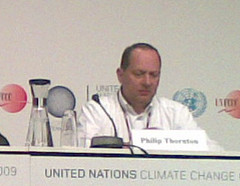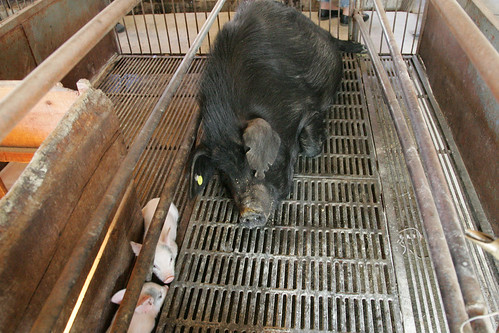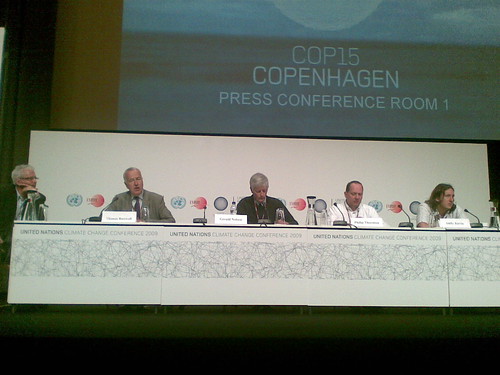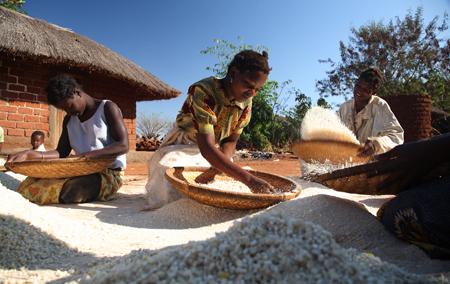When is it the ‘end of the game’ for livestock keepers wresting a living from diminishing natural resources? A new study suggests when adaptations to increasing external stresses are no longer viable for livestock peoples and their lands.
Sub-Saharan Africa has been called the food crisis epicentre of the world. Global change is likely to add to the burdens of many millions of poor and vulnerable people on the continent. Equipping policymakers and donor agents with tools and information with which to identify the ‘bounds of the possible’ in natural resource use is likely to become crucial in the fight to help hundreds of millions of Africans dependent on diminishing natural resources escape poverty, hunger and environmental degradation.
The business of scientists conducting livestock research for development is to help farmers and herders protect and grow their ‘living assets’ so that small-scale livestock enterprises become sustainable pathways out of poverty. That is what a group of scientists set out to do in an ‘integrated assessment’ of coping strategies in livestock dependent households in East and Southern Africa. Integrated assessment combines models to test the likely impacts of different future scenarios on ecological functioning as well as household well-being.
The authors of this new study entitled ‘Coping strategies in livestock-dependent households in East and Southern Africa’, recently published in the scientific journal Human Ecology, synthesized results of work undertaken in four livestock systems in eastern and southern Africa: pastoralist communities in northern Tanzania, agro-pastoralists in southern Kenya, communal and commercial ranchers in South Africa, and mixed crop-and-livestock farmers in western Kenya.
The authors of the synthesis are scientists at the Africa-based International Livestock Research Institute (ILRI), Colorado State University’s Natural Resource Ecology Laboratory and Department of Anthropology, and the Eastern and Central Africa Programme for Agricultural Policy Analysis. The results of their study confirm that household capacity to adapt to increasing external stresses is governed by the flexibility the householders are able to exercise in livelihood options. Such options include intensifying one’s crop and animal production, diversifying the kinds of plant and animal products one produces on the farm, and working for wages in a job found off the farm. The researchers quantified the likely impacts on households and ecosystems of people taking up such options. The results are being used to better target interventions designed to help poor people manage increasing change and risk.
The four case studies employed in this synthesis, all conducted since the late 1990s, looked at increasing risks and external stresses in the pastoral, agro-pastoral and mixed crop-livestock agricultural systems of eastern and southern Africa. All four studies focussed on households made particularly vulnerable not only because they rely on diminishing ecosystems goods and services (e.g., land, water, forages) for a large part of their livelihoods but also because they face volatile changes driven or characterized by increasing (1) population growth; (2) in-migrations and fragmentations of pastoral lands; (3) climate change and variability; and (4) increasing/changing consumption of meat, milk and other livestock foods and (5) decreasing land size.
In each case study, the researchers worked directly with farmers and pastoralists in collecting data with which to build and calibrate appropriate household models, in setting up and testing a wide variety of scenarios, and in visualizing and assessing the likely impacts of interventions on the various system components. Discussions by stakeholders and researchers of results of running the models helped disclose other scenarios to investigate and identify options that were subsequently tested by the farmers.
This paper synthesizes lessons learnt from these case studies and outlines future research needs.
Conclusions
The mixture of fieldwork and integrated assessment modelling employed in this synthesis indicate that having different options available with which to manage natural resources can help households at least partially overcome the effects of increasing stresses to the system caused by population growth, changes in climate and weather variability and land fragmentation. But there are also costs to implementing these options: costs to natural resources, to other stakeholder groups and to household incomes. Furthermore, households can offset increased stresses through natural resource management only up to a point. With the tools employed in these assessments, scenarios can be set up and run that go well beyond these thresholds, to points where offsetting is no longer possible through internal manipulation of the system.
The good news
The four case studies used in this synthesis indicate that households can partially offset the impacts of external stresses by increasing the size of cultivated plots (as pastoral communities are doing in northern Tanzania and agro-pastoral communities in southern Kenya), by diversifying their activities into other agricultural and nonagricultural activities (agro-pastoral communities in southern Kenya), by using climate forecasts to make stocking decisions (communal and commercial ranchers in drought-prone regions of South Africa), and by intensifying and/or diversifying agricultural production (mixed crop-livestock farmers in western Kenya).
The bad news
Although households are able to offset impacts of increasing stress to some degree through diversification and intensification, implementing these options generates other potential, and actual costs. ‘What this simply means’, says ILRI’s Philip Thornton, lead author of the synthesis, ‘is that there are thresholds in these systems beyond which it is unlikely that management options alone can offset increasing system stresses.’
Thornton says the integrated assessment framework is useful in identifying not only what is desirable, in terms of possible impacts on different groups of stakeholders, but also what is feasible. ‘Given increasing system stresses,’ he says, ‘the point may well be reached at which natural-resource-based livelihood options are simply no longer feasible.’
Indeed, a key use of integrated assessment is identifying situations where households are unlikely to be able to sustain current livelihood options based on exploitation of natural resources. In such cases, appropriate livelihood options will likely involve making radical rather than incremental shifts in agricultural and/or livestock productivity, finding off-farm employment, and exiting farming enterprises altogether.
The news for policymakers
All four case studies analyzed in this synthesis have substantial implications for policymaking. Among these are the following:
- The new options that poor households need to consider when adapting to change do not impinge merely on one or two economic sectors but rather strike at the heart of national policies for food security, self-sufficiency and the role of agriculture in economic growth and development in general (see Ellis 2004). Such policy debates can be enhanced by research.
- Policymakers can profit from demanding, supporting and utilizing broad integrated assessments that apply new approaches to development. Such approaches include those based on the principles of ‘integrated natural resources management’ (see Sayer and Campbell 2001) and ‘adaptive resource management’ and ‘adaptive governance of resilience’ (see Folke et al. 2002 and Walker et al. 2004).
- Poorer people often have the most to gain from implementing options that increase household ability to cope with change. Investments in developing and disseminating coping strategies and risk management options thus can help alleviate poverty in substantial ways.
- Householders’ objectives and their attitudes about, and access to, natural resources vary greatly. The type of household model best suited to each case will thus often differ, requiring that integrated assessments be done on a case-by-case basis. As Thornton says, ‘So-called “recommendation domains” for targeting technology and policy interventions are probably smaller than we thought.’ Acknowledging that, contrary to conventional wisdom, research impacts cannot easily be generalized across large areas has considerable implications for the way in which research for development can most effectively be carried out.
- We need to employ a dynamic framework to assess the ecological impacts of changes, together with their major feedbacks to livelihood systems, over the medium term at the least. There are lags and dampers in the system that need to be elucidated in any even partially integrated assessment.
- The assessment framework has to allow the quantification of major trade-offs so that decision-makers and stakeholders can visualize impacts of different actions on different parties.
- Although the integrated assessments employed in these case studies have limitations that should be addressed in further work, such assessments have a key role to play not only in quantifying trade-offs but also in identifying what is both desirable and feasible in highly complex systems. Integrated assessments, in other words, can help establish the outer limits within which agricultural research can reasonably be expected to contribute to improving and sustaining livelihoods in given situations.
Citation:
Thornton, P.K., R.B. Boone, K.A. Galvin, S.B. BurnSilver, M.M. Waithaka, J. Kuyiah, S. Karanja, E. Gonzalez-Estrada, and M. Herrero. Coping strategies in livestock-dependent households in East and Southern Africa: A synthesis of four case studies. Human Ecology. Vol. Online first (2007)
Download the paper: http://www.springerlink.com/content/75368853th35r755/
References:
Ellis, F. (2004). Occupational diversification in developing countries and the implications for agricultural policy. Programme of Advisory and Support Services to DFID (PASS) Project No. WB0207. Online at:
http://www.oecd.org/dataoecd/25/9/36562879.pdf
Folke, C., Carpenter, S., Elmqvist, T., Gunderson, L., Holling, C.S., Walker, B., Bengtsson, J., Berkes, F., Colding, J., Danell, K., Falkenmark, M., Gordon, L., Kasperson, R., Kautsky, N., Kinzig, A., Levin, S., Mäler, K.-G., Moberg, F., Ohlsson, L., Olsson, P., Ostrom, E., Reid, W., Rockström, J., Savenije, H., and Svedin, U. (2002). Resilience and sustainable development: building adaptive capacity in a world of transformation. Scientific background paper on resilience for the process of The World Summit on Sustainable Development on behalf of The Environmental Advisory Council to the Swedish Government. Ministry of the Environment, Stockholm, Sweden. Online at:
http://www.sou.gov.se/mvb/pdf/resiliens.pdf
Sayer, J. A., and Campbell, B. (2001). Research to integrate productivity enhancement, environmental protection, and human development. Conservation Ecology 5(2): 32. Online at:
http://www.ecologyandsociety.org/vol5/iss2/art32/
Walker, B., Holling, C. S., Carpenter, S. R., and Kinzig, A. (2004). Resilience, Adaptability and Transformability in Social-ecological Systems. Ecology and Science 9 (2): 5. Online at:
http://www.ecologyandsociety.org/vol9/iss2/art5/





